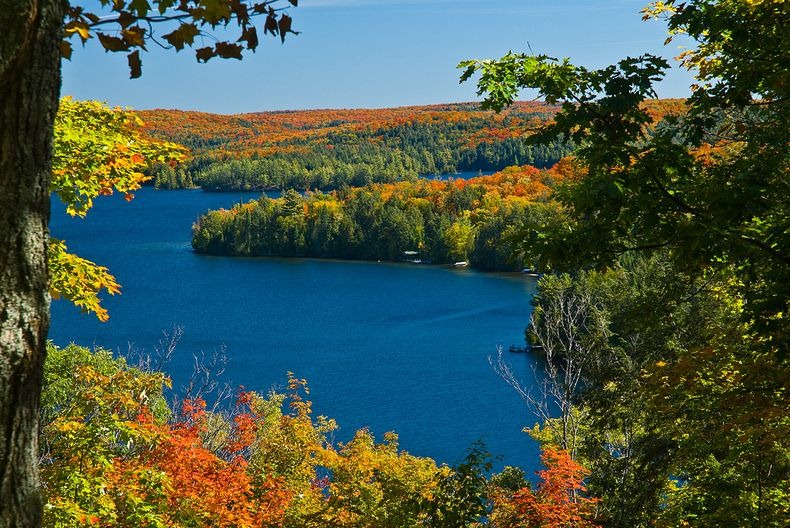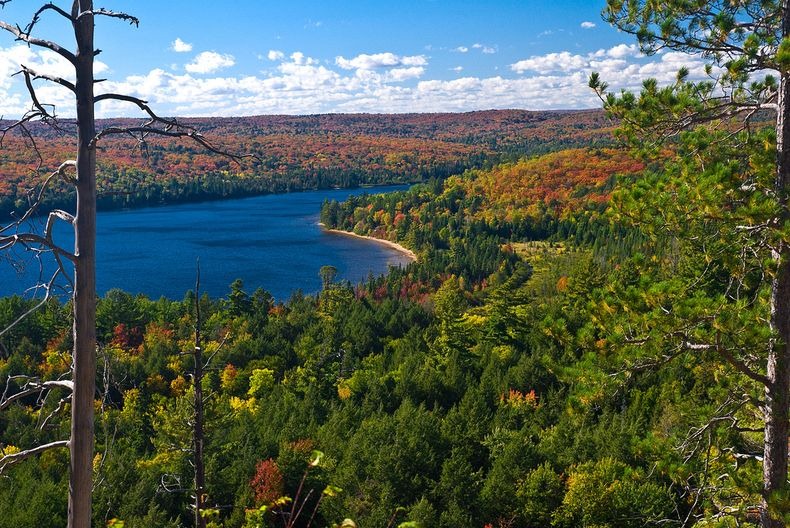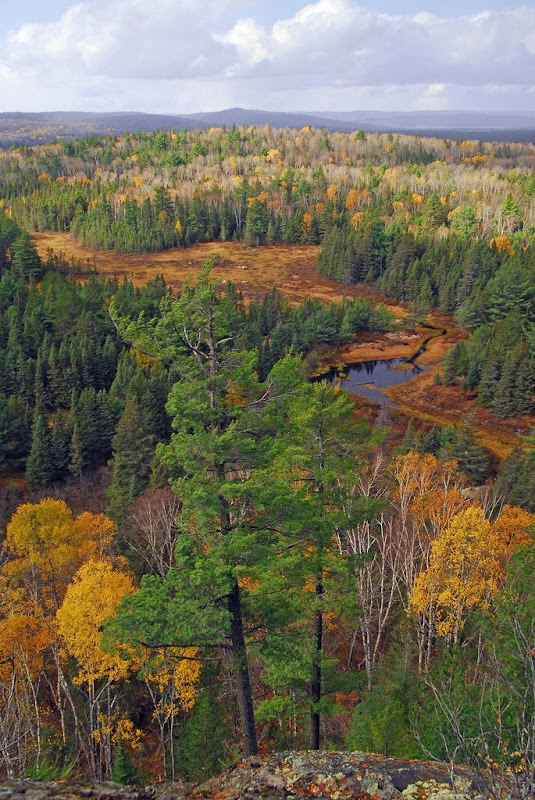Algonquin Provincial Park is located between Georgian Bay and the Ottawa River in Central Ontario, Canada. Fall is a spectacular time to visit Algonquin Park. During this time the entire park explodes in magnificent fall colors of red and yellow while the dark evergreens, blue skies and sparkling water provide amazing contrast.
The fall colors alone make a trip to Algonquin worthwhile, especially if you catch the spectacular colors of the Sugar and Red Maples from mid-September to mid-October. While hard to determine the exact peak of fall color, it is typically the last week of September or the first week of October. A couple of weeks later, the aspens, Tamaracks, and Red Oaks hit their best and put on another interesting show before giving way to a more subdued November.
Photo: Unknown, via Reddit
Algonquin Park is Ontario’s oldest and largest provincial park. The park was formed in 1893 with the purpose to serve as a timber reserve designed to keep forest-clearing settlers out of valuable timber lands. Preservation was only a secondary purpose. In 1896, lumber baron J.R. Booth completed the Ottawa, Arnpriror & Parry Sound railway (OA & PS) through the southern portion of the park. Though designed to haul timber logs out of the park, it allowed the vast expanse of Algonquin to be opened up for tourism. Highway 60 was completed in 1933, further opening the Park to visitors. The railway was abandoned in 1947 and logging is now a tertiary purpose of the park.
Covering approximately 8000 square kilometers of rugged Canadian Shield country, the park is home to an abundant wildlife population, including moose, wolves and black bears. Smaller mammals like otters, fox, chipmunks, squirrels and raccoons are common sights. Over 250 bird species have been recorded in Algonquin Park and everyone’s favorite wilderness bird, the common loon, is found nesting on most lakes. Over 2,400 lakes and 1,500 kilometers of canoe routes are located within the park.
There are only a few ways to get into Algonquin Park. The most obvious is by vehicle, via Highway 60 corridor. There are numerous places where you can leave your car while you enjoy either Algonquin's back country or the Highway 60 corridor. Campsites and portages are marked and well maintained. Algonquin can also be accessed by canoe, from various access points around the park. In fact, with motor boats restricted to a few lakes and road access to the park is limited to the Highway 60 corridor, most of Algonquin Park is only accessible by canoe. Backpacking and day hiking trails allow travel on foot. In the winter the park is also open to travel by ski and snowshoe.
If you plan to visit Algonquin Provincial Park during autumn, you can check the Fall Color Report at Algonquin Park website where park officials provides the up-to-date information.




































Comments
Post a Comment